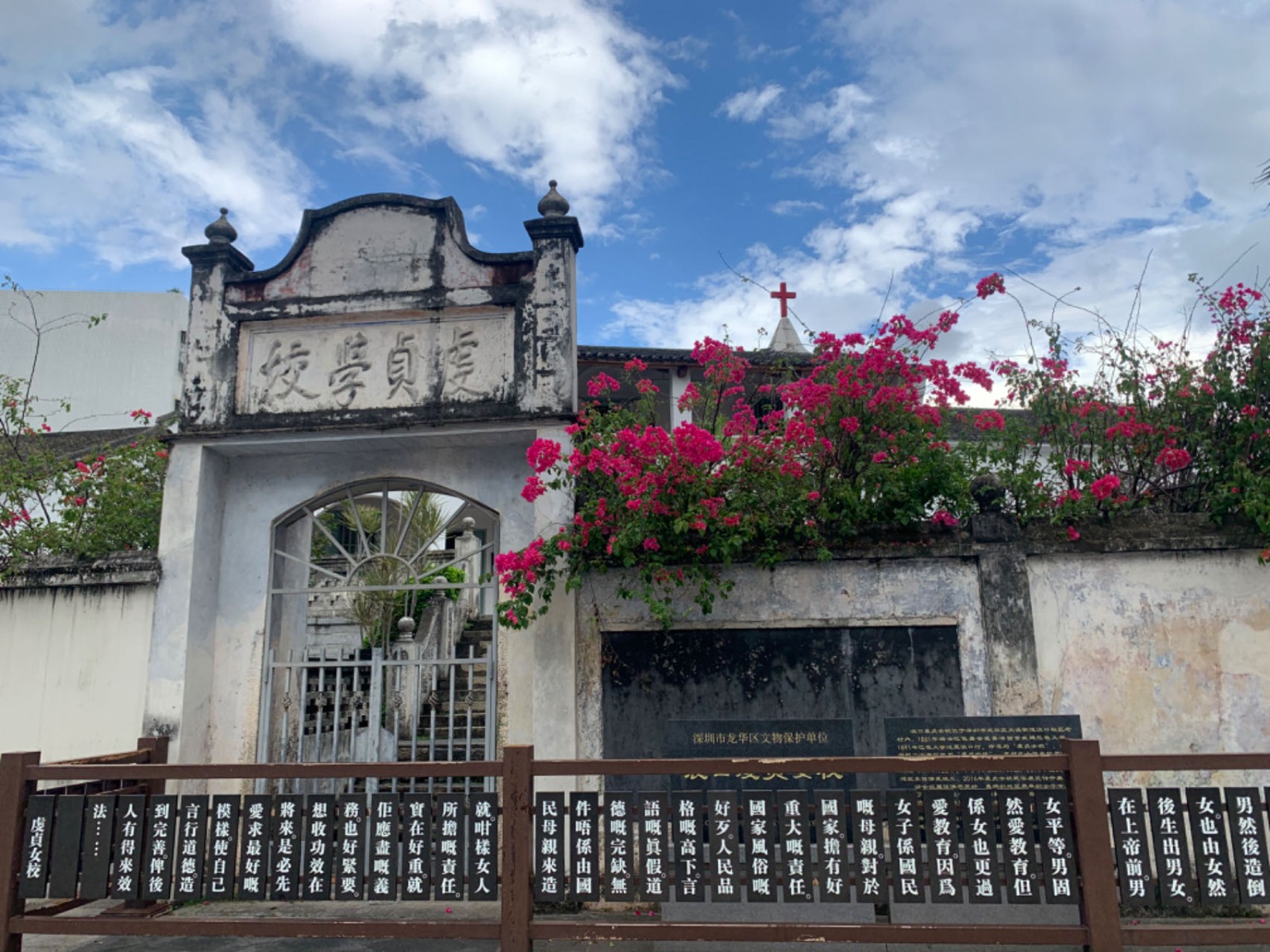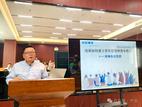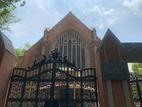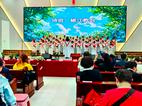Tsung Tsin Mission (TTM) is a Hakka church, evangelizing in the Dongjiang River basin, the Meijiang River basin, and the Pearl River Delta. It once governed over one hundred and sixty churches (or chapels), two hospitals, one theological seminary, four high schools, and over a hundred primary schools in more than fourteen counties.
TTM's predecessor was Basel Mission (BM), named after Basel City in Switzerland. In 1847, this Christian missionary society sent Swedish missionary Theodore Hamberg and German missionary Rudolph Lechler to China to spread the gospel. Since its founding, Western staff members that BM appointed have fully managed the church's administrative affairs. In 1922, BM handed over the missionary institutions and churches to Chinese pastors for self-management, renaming them Tsung Tsin Mission (Chong Zhen Church), with "Chong Zhen" meaning advocating and seeking the truth. In 1951, the Hong Kong district of the TTM was divorced from the TTM on the mainland, which transitioned into the Three-Self Patriotic Movement. The next year, it was registered as an independent organization with its present name, Tsung Tsin Mission of Hong Kong (TTMHK).
Iris Leung, a Christian scholar at the TTMHK Kau Yan Church, has also researched the history of Hakka churches in recent years. Besides the headquarters of BM in Switzerland, she has visited Hakka churches in Meizhou City, Shenzhen City, and Laolong Town in Heyuan City. On a day in August 2023, she shared the origin of BM, its missionary principles, and practical experiences in China with the Gospel Times, an online Chinese Christian newspaper.
Basel Mission and China
Firstly, she mentioned that different from other missions, BM initially was just a theological seminary in Switzerland, which mainly trained theologians from different countries and then sent them out. Leung explained that they intended to establish not just a church but a mission in China. The Basel Mission emphasized evangelism but was not strongly tied to denominations; the missionaries they nurtured and sent included those from the Lutheran Church and the Reformed Church.
In 1846, under the guidance of Karl Gützlaff, BM sent missionaries Theodore Hamberg and Rudolph Lechler to Hong Kong, marking the first contact between BM and China. Gützlaff founded the Chinese Union in 1844, which was an approach to indigenization. He believed that the Chinese should self-preach and be independent of missionary influences. For a month, they hired 1000 Chinese pastors to distribute gospel materials in various provinces of China under the supervision of 80 missionaries. They aimed to bring new believers back to Hong Kong for training and then dispatch them to more remote inland areas. Due to the issue of eating off the missionaries' plates within the Chinese Union, BM and the Chinese Union separated. BM started independent missionary work, focusing on preaching to the Hakka people.
Missionary methods and characteristics of Basel Mission
Leung introduced several characteristics of BM's missionary work. One was immersion in community life; the children of these missionaries spoke Hakka, living and eating with the Hakka people. With a deep admiration for Chinese culture, missionaries wrote many books discussing Christianity with the Chinese, such as a book about discussions on Feng Shui (geomantic omen) recording the talk with a geomancer about Christianity.
As BM placed significant emphasis on theology, the Lilong Theological Seminary of BM, founded in 1684 in Shenzhen, was considered the best pastoral training institution in the South China region. It not only trained its theologians but also educated students from other denominations. Students underwent a 7-year program, and some were selected to study in Switzerland. The seminary was relocated to Meixian and renamed Luk Yok Seminary in 1946. The seminary re-opened in Hong Kong in 1955 and was incorporated into Chung Chi Theological Seminary in 1966.
BM had strict rules for managing and training Chinese pastors within the church. For example, each person had to record the weekly sermon texts, topics, and key points in a book for head pastors to review. They had to write an essay each quarter on a subject that the pastor chose. Joint short-term training sessions were held, lasting seven days, and taught by three missionaries on preaching, doctrine or ethics, and biblical exegesis. They also published a book of rules for missionary work.
At the same time, BM emphasized the educational ministry and the medical ministry. In 1924, church records showed that BM operated over 110 schools in Guangdong Province, mostly rural primary schools, with a majority being boys' schools. The total number of students exceeded 6,400. They also established a teacher-training college. Missionaries changed the fate of Hakka girls by establishing girls' schools and adopting abandoned infants. After turning 16, these girls were arranged for marriage or given the freedom to work.
In 1862, BM built its mission building in Hong Kong. Rev. Rudolph Lechler opened a boarding school for girls called "Basel Charity School" in the building. Initially, only eight Christian girls attended, with parents sharing part of the expenses. Later, the number of students stabilized around 50. In 1891, it moved to Longhua District in Shenzhen, known as the Longheu Girls School. Leung mentioned the behind-the-scenes story: some parents felt that after returning from school, the girls looked down on the locals. But parents thought that they only learned to sing in school and couldn't do practical work, questioning how they would earn a living in the future. At that time, most Hakka people were low-income farmers, relying on agriculture for a living, with low levels of education.
From Basel Mission to Tsung Tsin Mission
Leung pointed out that BM was one of the first missions in China to implement the "Three-Self" principles. The church itself was in charge of personnel appointments and financial management. During World War I, BM was designated as the German Missionary Society, resulting in a blockade, with overseas evangelistic work affected. Many Germans could no longer stay in Hong Kong, so Chinese pastors began to take charge, leading the church to be independent. In 1922, BM handed over the missionary institutions and churches in China to Chinese pastors for self-management, renaming them the Tsung Tsin Mission.
In 1951, the Hong Kong district of the TTM separated from the TTM in China, becoming the TTMHK. The BM missionaries completely withdrew from the mainland. Some returned to their home countries, while others stayed in Hong Kong to assist in the development of the TTMHK. The mission continued to support the expansion of the TTMHK's evangelistic, educational, and social service ministries. Currently, the TTMHK has 28 churches. As the number of Hakka speakers diminishes, there are no longer Hakka-language worship services, with people worshipping in Cantonese and Chinese. A distinctive feature of the TTMHK is its focus on educational ministry. Initially, they set up schools, and in collaboration with the government, churches were established.
- Translated by Abigail Wu












